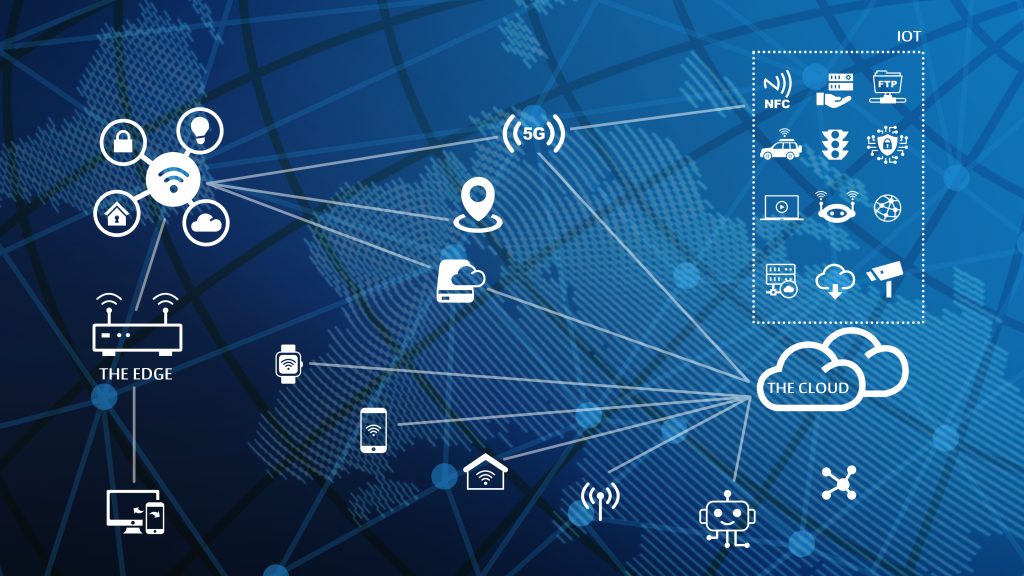Edge Computing in Healthcare: A Catalyst for Patient Care
- ATMECS Content Team
- 3 Minutes Read
- Posted on DEC 11th, 2024
Introduction
Edge computing is a decentralized computing paradigm that places computing resources closer to data sources, such as IoT devices or local edge servers. This proximity reduces latency, enhances data processing efficiency, and enables real-time decision-making. Edge computing is revolutionizing healthcare by bringing data processing closer to its source. Whether it’s from medical devices, sensors, or wearables, this decentralized approach enables faster data analysis and immediate decision-making. By reducing the need for remote, centralized data centers, edge computing empowers healthcare providers to respond more efficiently and effectively to patient needs.Understanding Edge Computing in Healthcare
Edge computing involves processing data at or near its source, rather than sending it to a remote data center. In the healthcare context, this means processing patient data locally, on devices like wearables, medical equipment, or on-premise servers. By reducing the distance data needs to travel, edge computing significantly minimizes latency and enables faster response times.The Benefits of Edge Computing in Healthcare
- Reduced Latency: Edge computing eliminates the need for data to travel long distances, reducing latency and enabling real-time analysis of patient data. This is particularly crucial in time-sensitive situations, such as during emergencies.
- Improved Network Resilience: By distributing processing power across multiple locations, edge computing can alleviate network congestion, making healthcare systems more resilient to disruptions.
- Enhanced Data Security: Keeping patient data local reduces the risk of data breaches during transmission, safeguarding sensitive information.
- Real-Time Analytics: Edge computing enables real-time analysis of patient data, allowing healthcare providers to make informed decisions quickly and effectively.
- Improved Efficiency: Edge computing can streamline workflows and reduce operational costs by eliminating the need for data transfer and storage in remote data centers.

Applications of Edge Computing in Healthcare
- Real-time monitoring of vital signs: Edge devices can continuously monitor patients’ vital signs, such as heart rate, blood pressure, and oxygen saturation. This data can be analyzed in real-time to detect anomalies and trigger alerts for immediate medical attention.
- Remote patient monitoring: Edge computing enables remote monitoring of patients with chronic conditions, allowing healthcare providers to track their health status and intervene as needed. This can reduce the need for frequent hospital visits and improve patient outcomes.
- Medical imaging: Edge computing can accelerate the processing of medical images, such as X-rays, MRIs, and CT scans. This can reduce waiting times for diagnoses and improve patient care.
- Telemedicine: Edge computing can enable high-quality telemedicine consultations, even in areas with limited network connectivity. By processing data locally, edge devices can reduce latency and improve the overall experience for both patients and healthcare providers.
- Drug discovery and development: Edge computing can be used to analyze large datasets from drug discovery and development research, accelerating the process of identifying new drug candidates.
The Bottlenecks of Traditional Cloud-Based Processing
Traditional cloud-based processing, while offering scalability and centralized management, can often introduce significant latency issues, especially in time-sensitive healthcare scenarios. The physical distance between the data source and the remote cloud servers can result in delayed data transmission, processing, and response times, which can be detrimental to patient care. Edge computing addresses these bottlenecks by bringing the computing power closer to the point of data generation, minimizing the distance data needs to travel. This approach not only reduces latency but also enhances data privacy and security, as sensitive patient information is processed locally rather than being transmitted to distant cloud servers.How Edge Computing Revolutionizes Healthcare Data Processing
Edge computing is transforming healthcare data processing in several key ways:- Real-Time Analytics: By processing data at the edge, healthcare providers can perform real-time analytics on patient data, enabling them to detect critical changes and initiate immediate interventions.
- Improved Responsiveness: With reduced latency, healthcare professionals can respond more quickly to evolving patient conditions, improving the quality of care and patient outcomes.
- Enhanced Privacy and Security: Edge computing keeps sensitive patient data local, reducing the risk of data breaches and ensuring compliance with healthcare regulations.
- Scalability and Flexibility: Edge computing solutions can be easily scaled to meet the growing demands of healthcare facilities, without the need for costly infrastructure upgrades.
- Efficient Resource Utilization: Edge computing optimizes the use of computing resources, reducing the strain on central servers and cloud infrastructure, leading to cost savings and improved system performance.



